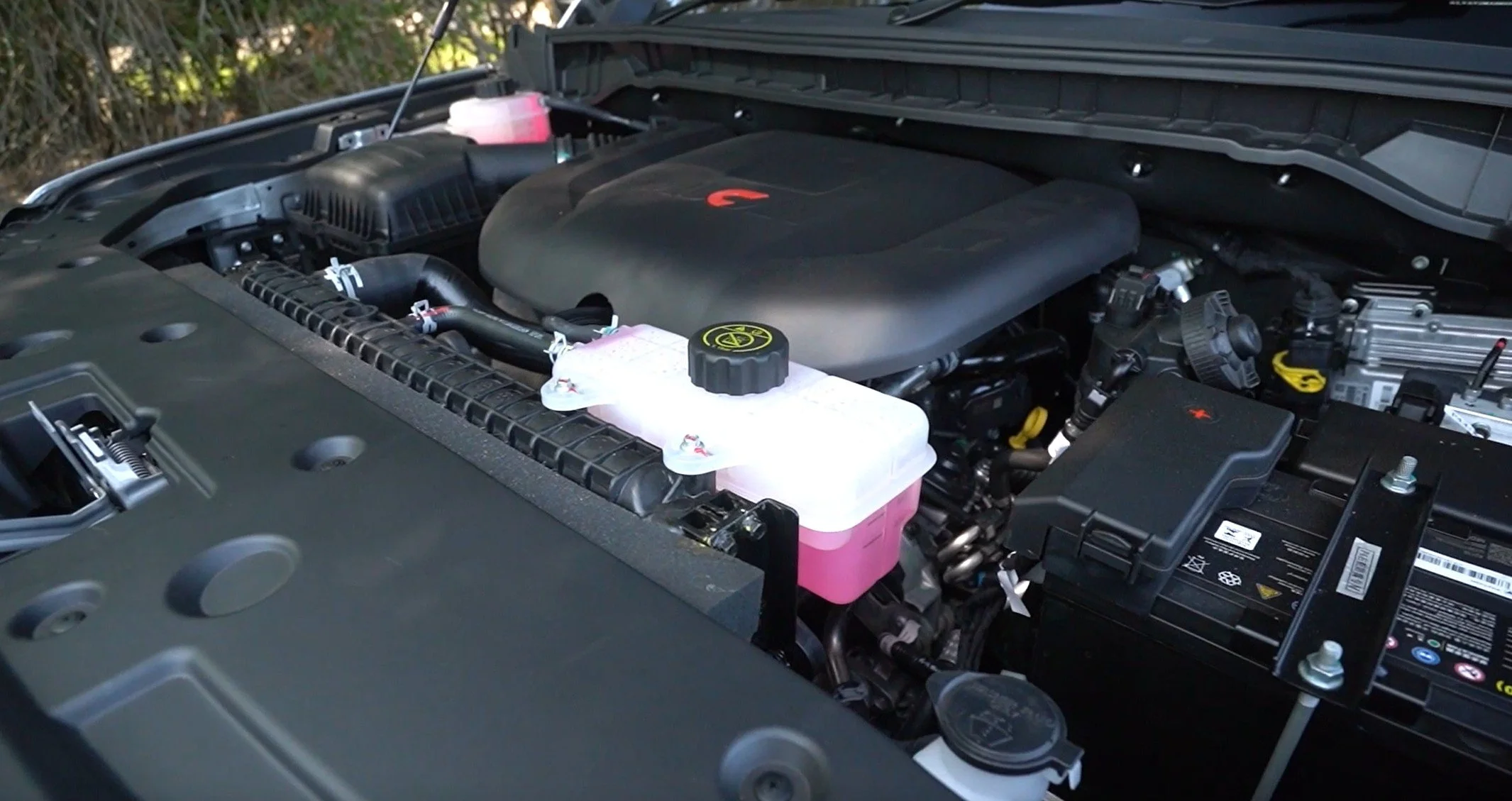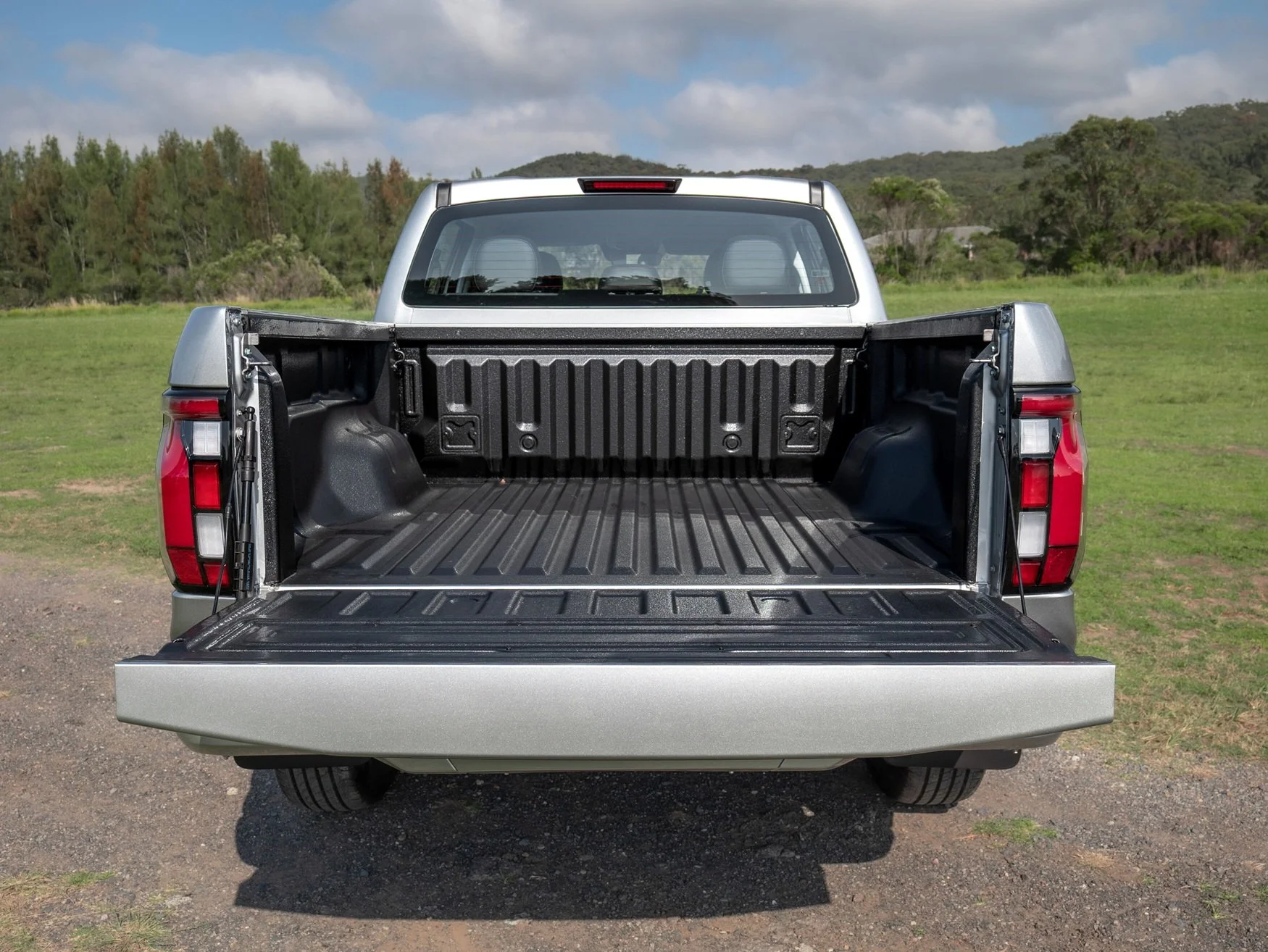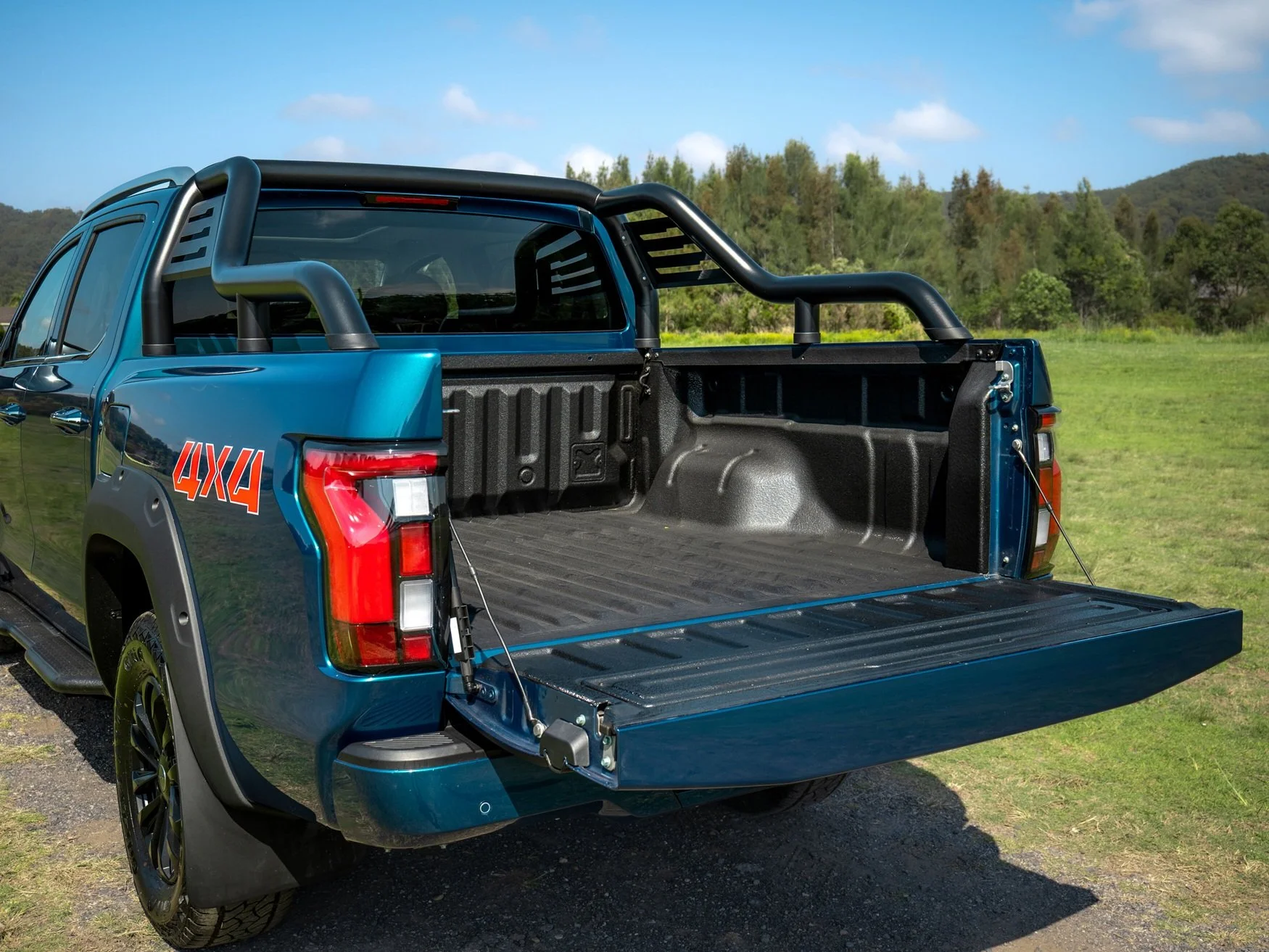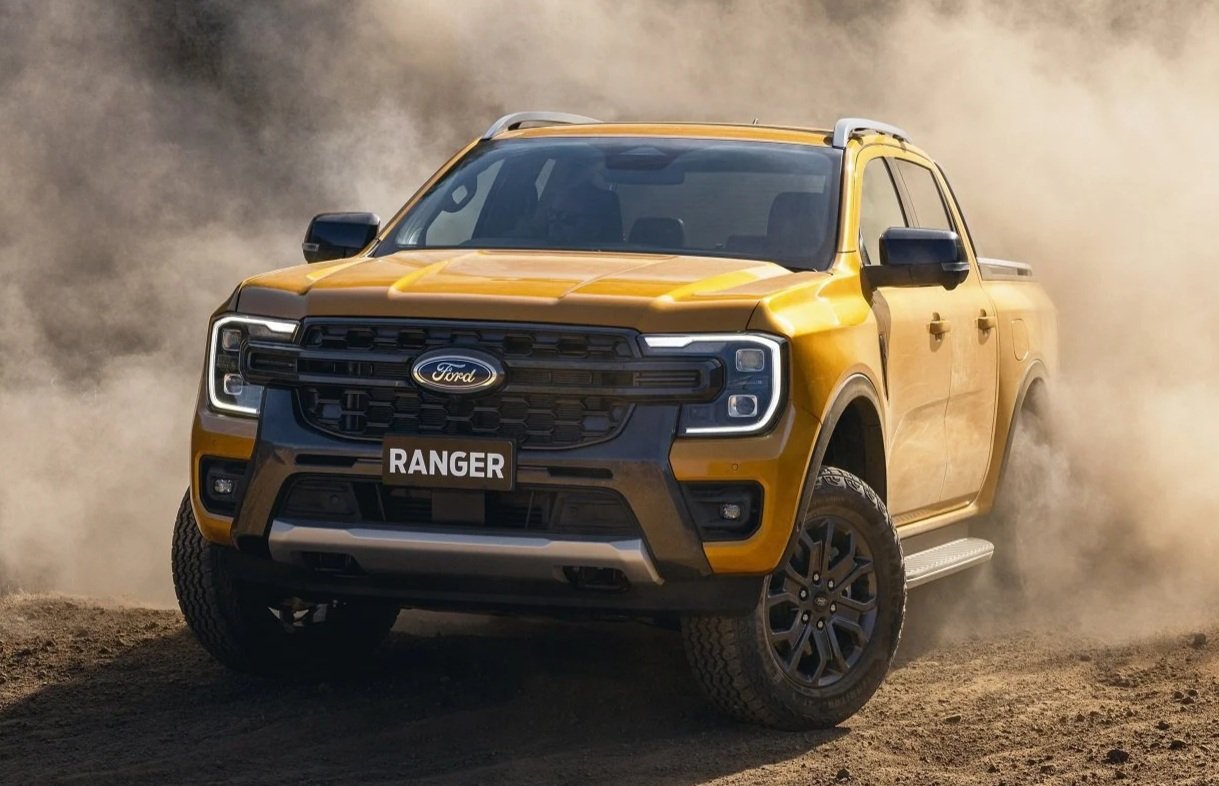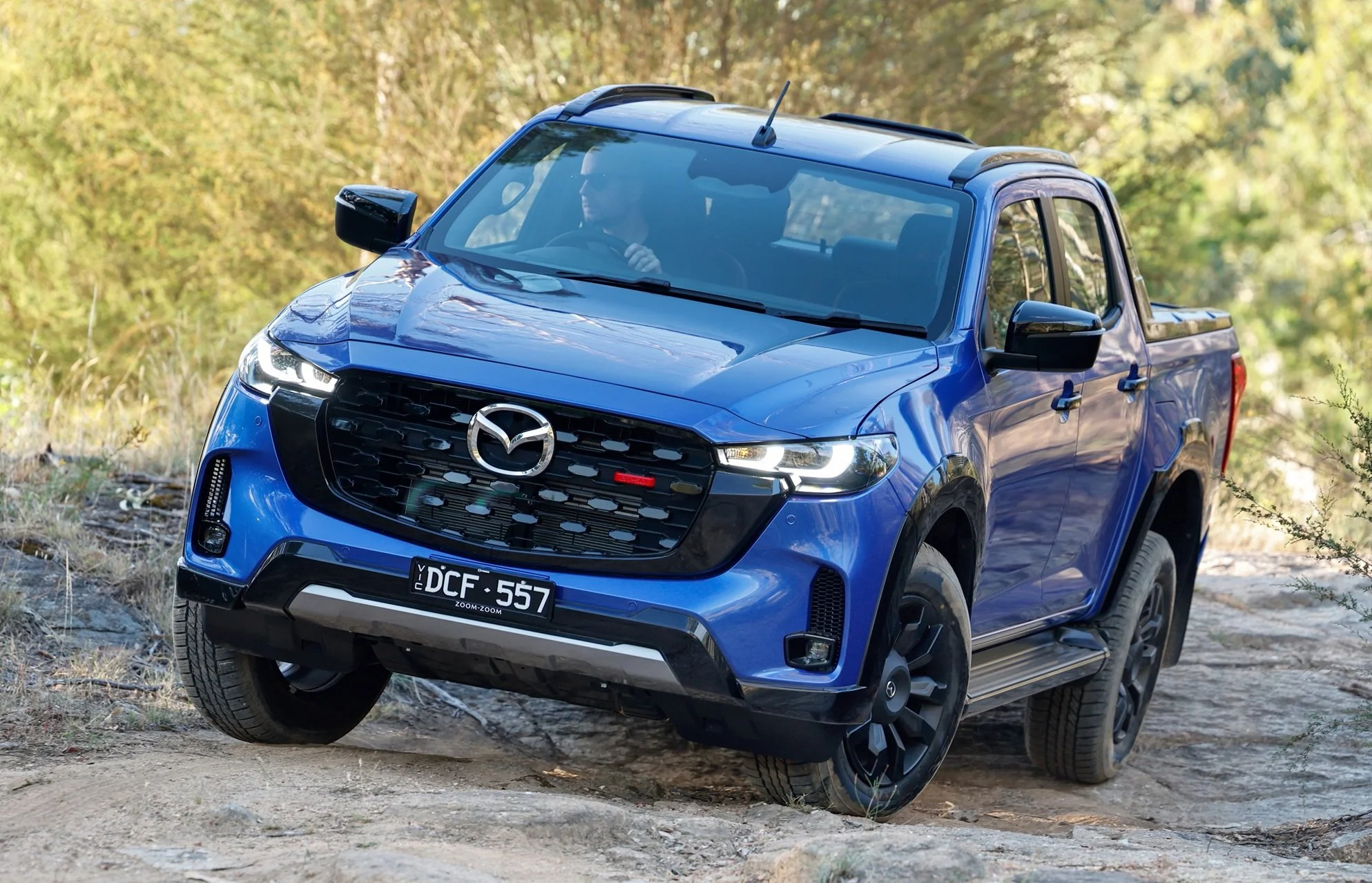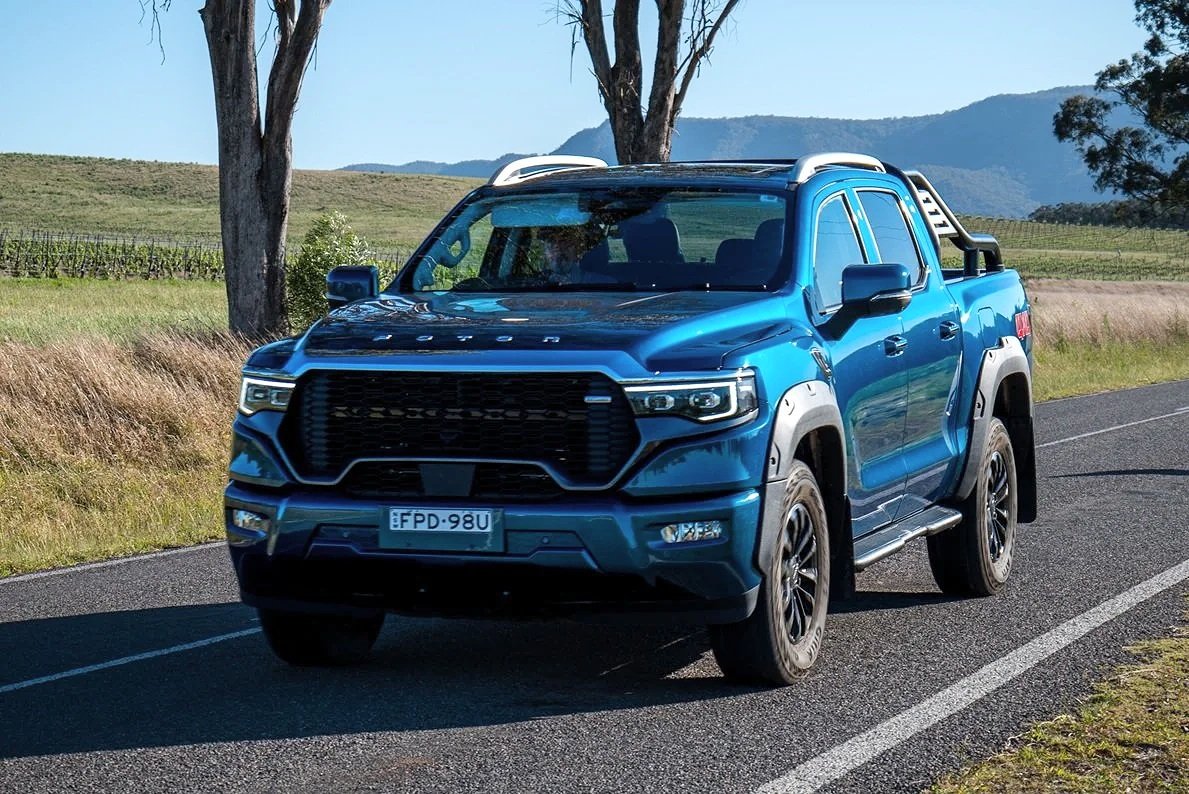Foton Tunland review and buyer's guide
An affordable, capable, frugal dual-cab in Australia’s crowded ute market makes a lot of sense for many reasons. Before considering the Foton Tunland, let’s see if it’s a legitimate workhorse, or just a cheap immitation.
The Foton Tunland seems to tick all the boxes for a budget-conscious dual-cab ute buyer in Australia - price, towing claims and it looks the goods.
But we’ve been down this road before with the first generation of SsangYong Musso, LDV T60, GWM Steed and even the original Foton Tunland. All unequivocally terrible vehicles prone to rust, poor fuel economy, gross unreliability and bad ergonomics.
So in today’s dual-cab maret where a new make and model seems to appear every few months, you cannot possibly have the precious time to test them all for yourself - Triton, Ranger, Tasman, BT-50, Cannon; that’s an entire Saturday you’ll never get back.
In this report we’re going to take a magnifying glass to the Foton Tunland to give you an honest, no-bullshit assessment for whether you should even bother (or whether it’s a diamond in the rough).
If you want to download the official Foton Tunland spec sheet, click here >
Let’s start with dimensions and how they translate into the real world with farmers, tradies, weekend off-road warriors, family camping and touring, and heavy towing.
There are two grades of Tunland, the V7 base model and the V9 top-spec variant, both of which get one powertrain packaged into a pretty big body that reaches 5617mm long. That’s 3 per cent longer than the GWM Cannon XSR which is the longest of the mainstream dual-cab utes, and it’s 4 per cent loner the the Ford Ranger Wildtrak.
It’s also a pretty tall ute, even compared with the Kia Tasman, at 1910mm high. The Tasman is 1890mm tall and was the tallest of the segment until Tunland pipped it by 20mm (1 per cent).
The Tunland has a wheelbase of 3355mm, which is 2 per cent longer than both Tasman and Ranger at 3270mm respectively. So in the size department, the Tunland is actually looking rpetty impressive for cabin space and legroom (wheelbase), overall on-road presence with payload and towing (notionally) as it pertains to its relative size, and at 240mm, it beats all of the big-name utes except for the Mazda BT-50 which it’s level with.
But there’s a second category of dual-cab ute/pick-up that the Tunland dares to step into the ring with. The full-size American pick-up trucks: Ford F-150, Ram 1500 and Chevrolet Silverado.
These American-built and Australian re-manufactured (converted) pick-ups are in a class of their own in terms of price: all around the $100-150K mark. That’s roughly a 100 per cent price increase over the $55,000 notional driveaway price of the top-spec V9 4X4 Tunland.
So does the Tunland offer 100 per cent better value, and do the American pick-ups offer 100 per cent better performance, capability, comfort and off-roading competence?
And does the Tunland represent the same qualities - reliability, functionality, comfort and performance - for $30K less than its mainstream rivals like Triton, Ranger, Tasman and Hilux?
Or is the Tunland just another SsangYong Musso, LDV T60, GWM Cannon and Mahindra pick-up - one of the other-other budget utes with a long way to go before putting a dent in the ute-building reputations of the big brands?
FEATURES & PRICING
V7-C | $44,700 approx. driveaway | dual-cab, 4x2
12-3-inch digital instrument cluster
14.6-inch infotainment screen
‘Advanced Driver Assistance’
Front collision warning, pedestrian collision warning
Emergency signal system
Trailer stability assist
Lane keeping & lane centring
Blindspot detection & door open warning
Rear cross-traffic alert
Traffic sign recognition
Adaptive cruise control
Electronic parking brake
360-degree camera (‘panoramic’)
Integrated dash camera
Front & rear parking sensors
Daytime Running Lights (DRL), dusk-sensing LED headlights with Follow Me Home, LED taillights, ambient lighting
Highway terrain tyres
Leaf spring rear suspension
Manual-fold mirrors
Single-zone A/C
4 speakers
2x Front USB-A ports, 1x 12V power socket
Manual driver’s seat (6-way)
Manual passenger seat (4-way)
Driver window auto up/down
Spray In-tub liner
Voice recognition.
V7-C | $47,850 approx. driveaway | dual-cab, 4x4
adds:
Part-time 4WD
4WD modes: 2H, Auto, 4H, 4L
Additional drive modes: Sand / Mud / Snow
Rear differential lock
All terrain tyres
Rear-quarter 4x4 stickers
V9-L | $51,000 approx. driveaway | dual-cab, 4x4
includes
Unique front-end styling
Premium sidesteps
Wheel cladding
Heated mirrors
Power folding mirrors
18-inch premium allow wheels
Sports bar
Lockable tray
Dual zone A/C
6 speakers
USB-A Ports (2x rear)
Vehicle-to-load Power Socket 220V/300W
Automatic anti-glare mirror
Wireless phone charger
Heated front seats
Driver’s seat – powered 6-way & 4-way lumbar
Electrically adjusted front passenger seat (4 ways)
Multi-link coil suspension
V9-S | $55,100 approx. driveaway | dual-cab, 4x4
adds:
Driver monitoring: distraction & fatigue warning
Facial recognition
Position memory mirrors
Driver’s seat memory
Front differential lock
Roof rails
Panoramic sunroof
Privacy rear glass
LED rear reading light
All windows – auto up/down
Ventilated front seats
Heated second row outboard seats
ENGINE
The Tunland uses a 2-litre turbo-diesel Cummins engine and a 48-volt mild-hybrid system that makes 120kW of peak power at 3500 revs, and 450Nm of peak torque.
To put that inter some perspective, the Kia Tasman has been criticised quite heavily for lacking the power of its predecessors with ‘only’ 154kW of peak power and 440Nm of torque. The Tunland offers about 28 per cent less grunt than a Tasman.
But if we look at the equivalent ~$55K dual-cab 4X4 of Ranger, Hilux, D-Max, Triton and Tasman at the same price as a Tunland, you’d be looking at the Ranger XLT 2-litre bi-turbo, the Hilux SR (manual), a D-Max SX, the Triton GLX and the Tasman SX.
All of these competitors offer more power, even in this lower price segment, as well as proven reliability, capable drivelines and load-carrying competence. Each one has an engine that has been through the years of on-road, in-service reliability sweepstakes. Tunland has only just stepped out of the horse float, so to speak.
What is interesting is when you put the Tunland’s power-to-weight ratio up against the established utes aforementioned.
Ranger XLT (2L bi-turbo): 73 kW/t (154kW | 2171kg)
Hilux SR (man, 2.8 turbo-dsl): 73kW/t (150kW | 2100kg)
Triton GLX (2.4L bi-turbo): 70 kW/t (150kW | 2111kg)
Tasman SX (2.2L turbo-dsl): 69 kW/t (154kW | 2283kg)
D-Max SX (2.2L turbo-dsl): 60 kW/t (120kW | 1980kg)
Tunland V9 (2L turbo-dsl, 48V): 53kW/t (120kW | 2312kg kerb wt.)
So even at the same pricepoint, the mainstream utes are still better for load carrying, towing and overtaking against the Tunland.
But up against the budget end of the market, the Tunland’s place among even these established utes becomes clear.
LDV T60 Max Plus Mega Tub: 72.6 kW/t
MG U9 Explore X: 65kW/t
KGM Musso (nee SsangYong): 64kW/t
GWM Cannon XSR: 59 kW/t
Tunland V9 (2L turbo-dsl, 48V): 53kW/t (120kW | 2312kg kerb wt.)
If you haven’t already looked into the Toyota Hilux range with its 48-volt so-called hybrid system, it’s basically just an ignition stop-start setup that uses a small motor generator, 48-volt battery and a DC/DC converter. This allows for the fitment of a stop-start system to the turbo-diesel engine in the case of Hilux.
It’s easy to think a tiny brand with no record of powertrain R&D pioneering would develop anything else, because that’s exactly what it is. Just because the Tunland on the outside looks like the Ram 1500 and Ford F-150 it’s trying to mimic, this 48-volt system is not much different.
The way it works is by powering the vehicle’s electrical systems during idle, meaning the engine reduces its RPM, thereby ‘reducing’ emissions via unburnt fuel to power said systems. And for what it’s worth, if it works and is reliable, then that’s good.
For Foton to offer such a system at $10,000 less than a Hilux, which hasn’t had an update since 2018 and is in fact a nearly 20-year-old platform, credit is due here for democratising this technology and wrapping it in a bigger, more luxuriously equipped dual-cab ute than the Hilux SR.
This 48-volt system means the 48V battery powers things like the air-conditioning, which typically run off the alternator, which is run by the engine demanding more fuel to burn to make that electricity.
Just on this point, modern vehicles, especially diesels, use a negligible fuel at idle anyway. Meaning the advantages it offers you in terms of fuel savings are going to be just as hard to realise.
In the case of Hilux, $9 per week is the kind of fuel saving it’s suggested you would make, purportedly. But because you paid an extra $590 for it, that’s going to take more than 12 months to recoup - fair enough. But Foton’s offering a top-spec Tunland for the same price as a no-frills SR Hilux with cloth seats, basic air conditioning and turn-key barrel ignition.
Foton has also included a manual DPF regeneration switch for actively burning off the particulates that’ve accumulated in your diesel particulate filter - and it didn’t take court action and media pressure to get this feature fitted, unlike the 2.8 engine in Hilux all those years ago.
And if nothing else, being able to talk to your mates about having a Cummins diesel under the bonnet is a ‘flex’, in the contemporary vernacular.
TRANSMISSION
Using a ZF 8-speed automatic transmission is a pretty clever move, considering ZF’s long history of building transnmissions for the car industry globally.
You get a typical 2H rear-wheel drive mode, an ‘auto’ model which acts like a typical on-demand system to divert drive to the front in slippery conditions, a standard 4H for high range four-wheel drive but locked (as opposed to the ‘auto’ deciding for you), and of course, 4L for low-range off-road driving.
To be clear here, the ‘Auto’ mode does allow on-road high-traction surface driving such as on wet tarmac or good condition dirt roads for effective all-wheel drive type driving. This makes it one of the most affordable dual-cab utes to offer the front differential that makes this driving possible.
What’s interesting here about having 8 gears is the fact that being a primarily medium- and heavy-duty truck brand, Foton (and their use of ZF transmissions) shows a proficiency with splitting the available torque. Ford had that (and to some extent still has) a gear hunting behaviour in the Ranger which is primarily down to calibration.
The Mistubishi Pajero Sport has used an 8-speed auto since 2015 and it has never had any issues with ratio hunting despite having ‘only’ 130kW in which to multiply that torque.
In fact the Pajero Sport’s gear ratios are very similar to the Foton Tunland with the main exception being that because the Mitsubishi 2.4 turbo-diesel makes more power it doesn’t need quite as high the torque multiplication as the Tunland.
First gear ratio in Pajero Sport is 4.8:1 whereas it’s 5:1 in the Tunland; 3.2 in Tunland vs 2.8:1 in Pajero Sport; again 1.8 in Pajero Sport vs 2.1:1 in the Tunland; 1.7:1 in Tunland to 1.4 in the Pajero Sport.
What this means is if you’ve driven a Pajero Sport and realised what a nicely-driving piece of engineering that transmission is, you should notice similar drive characteristics in the Tunland. Only with a touch more revs from first to 5th.
TOWING
Inchcape Australia is the impoerter of Foton Tunland and it’s clear they wanted to make sure their first udl-cab ute could ‘match it with the big boys’, notionally.
Maximum braked towing for the Foton Tunland is 3.5 tonnes, with a towball download limit of 350kg.
The kerb weight of the heaviest variant is 2315kg, meaning the Tunland is on the same level of inherent heavy towing stability as a Ranger, Tasman or Triton - but that doesn’t mean it’s a good idea.
In fact, it’s a potentially dangerous mix, so don’t go looking to find the limit of towing for something like a Tunland - or any dual-cab ute, for that matter. If so, buy a proper truck.
When you max out the towball download (which counts as payload), you’re limited to 645kg on the V9 variants, and 700kg and 765kg respectively on the V7 4X4 and V7 4X2, respectively. This is because the 4X4 is heavier than the rear-wheel drive version.
If heavy towing is something you intend to do often with a Tunland, it’s probably better getting the V7 with that bigger margin of safe working load limit than the V9.
Conservative expectations will also be prudent in terms of pulling power with only 120kW on offer, even on a moderately heavy towing assignment upwards of 1500-2000kg. Don’t expect long, steep hills to be anything other than a slog.
I'll help you save thousands on a Foton Tunland
Just fill in this form.
No more car dealership rip-offs.
Greater transparency.
Less stress.
FUNCTIONALITY
A damped tailgate on the base model is a clear sign that Foton (and Inchcape) wants Tunland to be competitive, but there are many more clues to suggest the big-name utes are going to feel the value squeeze.
The tray is 1577mm long with 1240mm between the wheelarches, which is 135mm wider than the Hilux SR5 - that’s 10 per cent better clearance for furniture, a pallet, timber supplies or whatever. It’s also neck and neck in terms of tray length at 1570mm for Hilux.
So the tray is as long as the second most popular vehicle in Australia (Hilux), and it’s more accommodating, and it’s better priced with an 8 per cent longer wheelbase, meaning more legroom for passengers and 10 per cent better ground clearance for off-roading.
Payload capacity of 1115kg (in the V7 4x2), 1050kg (in the V7 4x4), or 995kg in the V9 - which puts it right up there against the likes of Triton, Hilux, BT-50 and Ranger.
Likewise, breakover angle at 21 degrees, approach angle at 28 and departure angle at 26 degrees makes it just a physically capable of hitting the same slopes as the big brand utes, and with a wading depth of 700mm it’ll ford the same shallow rivers as well.
Tie down points in the tray are attached halfway up the bed height (instead of down low where everybody prefers them), and the tailgate only locks with the keyfob on the V9. You’ll probbaly want the side steps on the V9 for getting into and out of what is a pretty big ute, certainly.
Not being able to get the factory roof rails on the V7 is a missed opportunity for Foton, because the same potential buyer (like you, perhaps) who’s prepared to forego features in favour of payload is probably also going to prefer putting long timber on roof racks.
Fortunately, you do get a 220-volt power point capable of 300 Watts of draw, making it good for charging phones, laptops, running a trickle charger or possibly charging an 18-volt tool battery (depending on how high it’s rated).
Foton also deserves credit for offering a tyre pressure monitoring system which up until very recently was a glaring omission on most non-Chinese brands - certainly you never found it on anything costing less than $55K a few years ago. The only reason they changed their tune and started offering it standard on lost of vehgicle was htanks to imminent pressure from Chinese brands.
INTERIOR
Sitting in the Tunland it’s easy to think one of the German big-three prestige brands had had a crack at making a peasant’s pick-up truck. It feels big inside, but nothing really feels that cheaply put together, certainly it feels better quality than the $50K pricetag.
The seats on the V9 are quilted and offer big, chunky bolsters for keeping you in position during twitchy, bouncing terrain, and the grab handles on the A and B pillars are perfect for hauling yourself into the seats.
But what’s really fascinating about rhe interior of either variant is that there’s nothing particularly offensive about this cockpit from a driver’s ergonomics perspective.
The cupholders are mounted in the correct position below the primary rotary dials and transmission selector (that looks like it’s come off a Bentley or a 5-Series Beemer), and the centre console is wide and pretty deep. Aside from the glossy finish on the transmission tunnel which is going to refract light, the simple, logical layout ticks many boxes other, much newer utes didn’t get the memo about.
Unfortunately, the ‘Home’ icon is located at the far left bottom corner of the whopping great 14.6-inch infotainment touchscreen.
For the (presumably) majority of ute owners out there who cannot be botherd going via the touchscreen to do things, there are a long row of buttons underneath the screen for various air-con, demisting and media functions.
Unfortunately, much like the global brands that also sell vehicles in Australia, the Foton has cruise control etc on the left of the steering wheel and media, phone etc on the right, which is a legacy of left-hand drive markets.
The door mirrors are suitably big for viewing not just into your blindspot but also they’re wide enough to sufficiently see down the back end if you have a trailer on board. Said mirrors are mounted to the door itself and not in the corner of the sideglass, which leaves a sliver of space to see through when you’re turning tight corners or off-roading.
The rearview camera should be a lesson to the likes of Mazda, Subaru and Toyota on how to offer properly integrated software and stich together a 360-degree image that makes sense to the driver. You don’t get a 360-degree camera on the Tunland, but the rearview camera is so crisp it puts most Japanese ute competitors to shame.
Ventilated front seats is available on the V9 S top-spec at $55K, which is more than can be said for the $80,000 Ford Ranger Platinum, the GWM Cannon Alpha ($58,000), but it does get pipped by the KGM Musso at $48K.
You’ll want to have a good play around with all the features in the touchscreen and cabin generally when you take a test drive. Connect your phone, make a phone call, set and change the radio stations etc. Oh, and there’s not DAB+ digital radio in the Tunland, which might be a bummer for some.
Overall, the Tunland’s interior ticks a long, long list of the boxes Japanese brand (Thai built) utes have only recently started ticking themselves - and the Tunland does it without any offensively bold or brash, or downright bizarre styling or design.
DRAWBACKS
Without wanting to labour the point, 120 kilowatts is probably not going to be enough for some buyers with certain heavy payload or hard towing assignments.
But the biggest drawback for the Foton Tunland is that despite all the good things it’s offering at such a compelling pricepoint, we still have abolustely no track record for this brand.
Granted, we do know Inchcape Australia pretty well after their long stint importing and selling Subaru here - and for the excellent reputation they’ve built up for customer support, onshore parts supply and technical diagnostics.
They’re also pretty fair when it comes to warranty, Australian Consumer Law and doing the right thing,rather than seeing what they can get away with, which seems to be the mantra at far too many brands in Australia.
The unknown aspect of Inchcape’s foray into selling the Foton brand is that they’ve never done this before, not with a proper dual-cab ute, not with a notional hardcore 4X4 and not with something capable of this kind of towing capacity.
We also haven’t learned how robust the Tunland’s 48-volt mild hybrid system is and how well it’s been integrated with things like trailer electrical systems, reliability in extreme Australian conditions or when wading through water.
With some time and some proven sales results, Foton does have the potential to do very well under the Inchcape umbrella. But it’s probably a good idea to wait until that happens or, if you can’t wait that long, stick with a Triton, BT-50 or a GWM.
MAIN COMPETITORS
FORD RANGER (Wildtrak)
ENGINE: 3L bi-turbo-diesel V6 | POWER: 184kW @ 3250 RPM | TORQUE: 600Nm @ 1750-2250 RPM
Kerb wt: 2388kg (Wildtrak) | Power-weight ratio: 79kw/t
Max. potential payload: 962kg (Wildtrak)
GVM: 3350kg | GCM: 6400kg
Click here for Ford Ranger review >>
Driveline: 10-spd epicyclic auto trans, electromechanical clutch pack (acts as front diff), rear differential, row-range transfer case, 4-high on-road use
Brakes: ventilated front discs, ventilated rear discs
Front / rear axle limit: 1490kg / 1959kg
Approach / breakover / departure angle: 30 / 21 / 23 degrees
Ground clearance / wading depth: 234mm / 800mm
Tray length: 1464mm | width (b/w w/arches) 1217mm | height: 525mm
Front / rear overhang: 865 mm | 1215 mm || Turning circle: 12.9m
Wheelbase: 3270mm | Total length: 5370mm | Width: 1918mm (excl. mirrors) | Height: 1886mm
PRO: V6 towing grunt (600Nm), all-wheel driveline system, heavy kerb weight makes heavy towing safer at speed
CON: Below-average customer support from Ford Australia, expensive range, 2L bi-turbo is a bit highly strung
Comment:
Ranger is undeniably the most masculine ute on the market, and it certainly gets an all-access pass to every building site, every High Country campground and has the towing cajones for mass market appeal.
The reliability isn’t as good as it should be, and Ford Australia needs to up its game in terms of customer service, but at least you can drive it in 4H on high-traction surfaces such as in heavy rain or good-quality gravel backroads. Range is also very expensive, making the Triton look like a bargain.
Click here for more on Ford Ranger >>
MITSUBISHI TRITON (GSR)
ENGINE: 2.4L bi-turbo-diesel 4-cyl | POWER: 150kW @ 3500 RPM | TORQUE: 470Nm @ 1500-2750 RPM
Kerb wt: 2170kg | Power-weight ratio: 70kW/t
Max. potential payload: 910kg (GSR)
GVM: 3080kg | GCM: 6250kg
Driveline: 6-spd epicyclic auto trans., centre and rear differentials, row-range transfer case, 4-high on-road use
Click here for Mitsubishi Triton review >>
Brakes: ventilated front discs, rear drums
Front / rear axle limit: 1580kg / 2040kg
Approach / breakover / departure angle: 30/ 23 / 22 degrees
Ground clearance / wading depth: 228 mm / 800mm
Tray length: 1555mm | width (b/w w/arches) 1135mm | height: 525mm
Front / rear overhang: TBC | TBC || Turning circle: 12.7m
Wheelbase: 3130mm | Total length: 5320mm | Width: 1930mm (excl. mirrors) | Height: 1795mm
Comment:
If you want the best fuel economy, equal towing capability, all-wheel drive 4H use on sealed roads (but in poor driving conditions) but you also want good brand support while also being a whopping $15,000 cheaper than the equivalent Ranger - Triton is unrivalled. Clever centre diff and all-wheel driveline allows high-traction surface use, excellent value, competitor rivalling towing capacity, more frugal than most equivalent utes.
Triton is also the only ute to be tested against the latest, more stringent crash testing protocols, and yet can also offer a comfortable, practical interior that caters to both long-distance touring and daily-driver tradie commuter practicality.
Click here for more on Mitsubishi Triton >>
KIA TASMAN
ENGINE: 2.2L turbo-diesel 4-cyl | POWER: 154kW @ 3800 RPM | TORQUE: 440Nm @ 1750-2750 RPM
Kerb wt: 2223kg (X-Line) | Power-weight ratio: 69kw/t
Max. potential payload: 1027kg (X-Line)
GVM: 3250kg | GCM: 6200kg
Driveline: 8-spd epicyclic auto trans, front differential, rear differential
Click here for Toyota Hilux review >>
Brakes: ventilated front & rear discs
Front / rear axle limit: 1450kg / 2040kg
Approach / breakover / departure angle: 28/ 23 / 25 degrees
Ground clearance / wading depth: 224mm / 800mm
Tray length: 1512mm | width (b/w w/arches) 1186mm | height: 540mm
Front / rear overhang: 855 mm | 1285 mm || Turning circle: 12.3m
Wheelbase: 3270mm | Total length: 5410mm | Width: 1930mm (excl. mirrors) | Height: 1890mm
Comment:
Tasman is the newest ute platform in this group, with the exception of Tunland. And despite its face and the notional lack of grunt, it’s actually the best powertrain integration of all the mainstream dual-cab utes on sale today. The transmission is perfect - and that’s a word that extremely rarely gets bandied around on AutoExpert.
Tasman offers a reliable 2.2-litre turbo-diesel engine and a brilliant off-road prowess you probably wouldn’t expect ‘from a Kia’. It’s not the same primitive 4WD system as D-Max whereby 4H cannot be used on-road. You can drive Tasman in 4-High on wet tarmac, gravel roads or steep driveways without ever worrying about breaking anything.
The interior kicks Mazda’s and Ford’s efforts to the kerb, too.
TOYOTA HILUX (Rogue)
ENGINE: 2.8L turbo-diesel 4-cyl | POWER: 150kW @ 3000 RPM | TORQUE: 500Nm @ 1600-2800 RPM
Kerb wt: 2231kg (Rogue) | Power-weight ratio: 68kw/t
Max. potential payload: 854kg (Rogue)
GVM: 3050kg | GCM: 5850kg
Driveline: 6-spd epicyclic auto trans, front differential, rear differential
Click here for Toyota Hilux review >>
Brakes: ventilated front discs, rear drums
Front / rear axle limit: 1450kg / 1700kg
Approach / breakover* / departure angle: 31/ 39*/ 23 degrees (*based on old Rogue, before 265mm ground clearance gain of 20mm in current version which Toyota Aust. does not state breakover)
Ground clearance / wading depth: 265mm / 700mm
Tray length: 1570mm | width (b/w w/arches) 1105mm | height: 495mm
Front / rear overhang: 997 mm | 1245 mm || Turning circle: 11.8m
Wheelbase: 3085mm | Total length: 5320mm | Width: 2020mm (excl. mirrors) | Height: 1870mm
Comment:
Hilux is the oldest ute platform in this group - and by significant margin. The last time Hilux was given a substantive update was 2018, even though Toyota Australia has tried to sex it up with the ‘GR’ pack.
Hilux has the best resale value, but that’s hinged on their religious brand presence in Australia. It’s a fairly bland ute with little to distinguish it from the rest, and in fact relies on the same primitive 4WD system as D-Max whereby 4H cannot be used on-road.
ISUZU D-MAX (X-Terrain) / MAZDA BT-50 (SP)
ENGINE: 3L turbo-diesel 4-cyl | POWER: 140kW @ 3600 RPM | TORQUE: 450Nm @ 1600-2600 RPM
Kerb wt: 2170kg | Power-weight ratio: 66kW/t
Max. potential payload: 910kg (GSR)
GVM: 3080kg | GCM: 6250kg
Click here for Mazda BT-50 review >>
Click here for Isuzu D-Max review >>
Driveline: 6-spd epicyclic auto trans., centre and rear differentials, row-range transfer case, 4-high on-road use
Brakes: ventilated front discs, rear drums
Front / rear axle limit: 1450kg / 1910kg
Approach / breakover / departure angle: 27 / 22 / 19 degrees
Ground clearance / wading depth: 240 mm / 800mm
Tray length: 1570mm | width (b/w w/arches) 1122mm | height: 490mm
Front / rear overhang: 905 mm | 1255mm || Turning circle: 12.5m
Wheelbase: 3125mm | Total length: 5310mm | Width: 1880mm (excl. mirrors) | Height: 1810mm
Comment:
D-Max has loads of rusted on fans and that’s quite okay, because it does get plenty of aggressive styling. But that’s about where it stops being unique or compelling.
Sure, that Isuzu diesel engine is reliable, and they have tidied up the driveline compared with the old model, but it’s still a very rattly, vibrating powertrain that Mazda BT-50 also shares. Not being able to use that 4WD system in ways that more modern and future-proofed dual-cab utes have been enabled, such as on-road in heavy rain while towing, is a big drawback when a top-spec D-Max Blade wants $78,000.
Click here for more on Mazda BT-50 >>
Click here for more on Isuzu D-Max >>
CONCLUSION
Foton and Inchcape Australia have actually proven it’s not that hard to make a nice, affordable, functional - but also stylish - dual-cab ute with wide consumer appeal and value.
The Tunland offers lower budget buyers the chance to get themselves into a very comfortable, fairly capable and pretty good looking ute that is, potentially, going to be decent to drive, own and rely on for work.
If you’re satisfied with the good brand reputation Subaru has earned over the years, then you might be willing to take a punt on the Foton Tunland, in which case, all power to you. (You might need it.)
But if you’re still on the fence for now, it’s not a bad place to be until you at least have 6-12 months worth of sale data to go by to establish if the Tunland is actually gonna sell. Lest you get left with a ute with no commercial brand support - however unlikely that may be.
Certainly the Tunland is a compelling low-budget offering and anybody who simply needs to get themselves a replacement workhorse for light to moderate duties, the Tunland might actually turn out to be a diamond in the rough.
But let’s be completely clear: just because it has a baby Cummins diesel under the bonnet and it says 3.5 tonnes on the spec sheet, that does not make it a Hilux or Ranger or Triton for only $55K.








